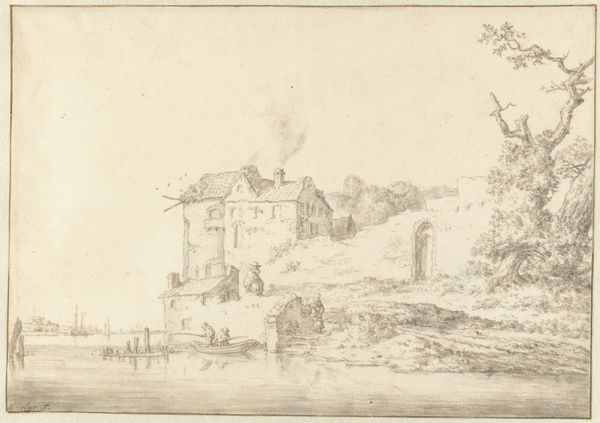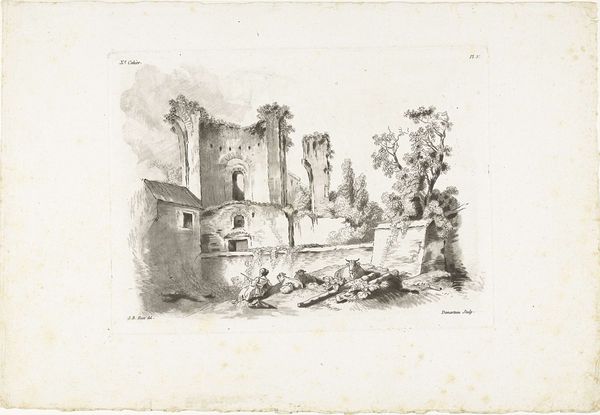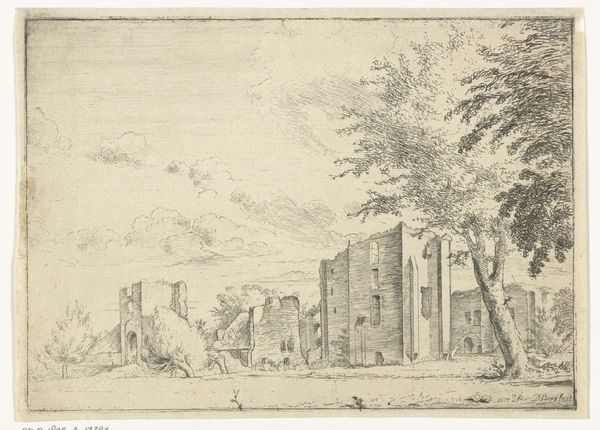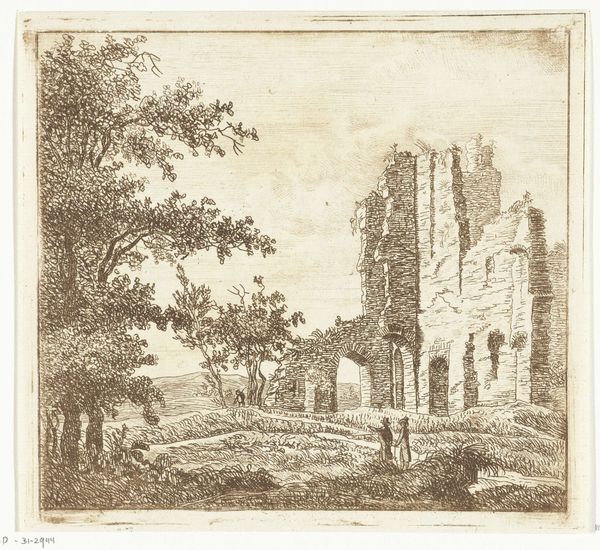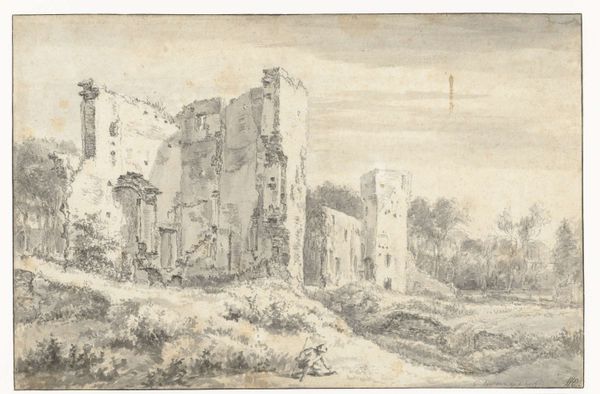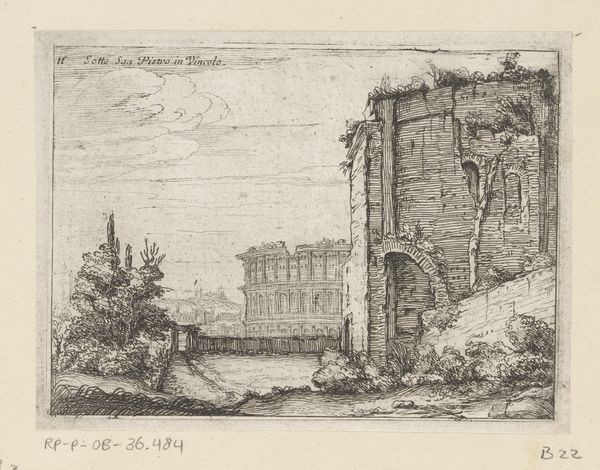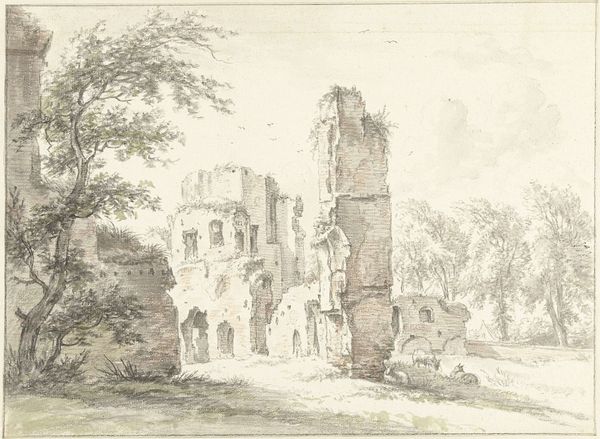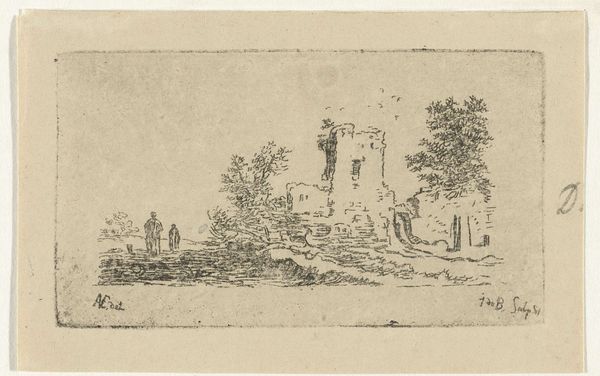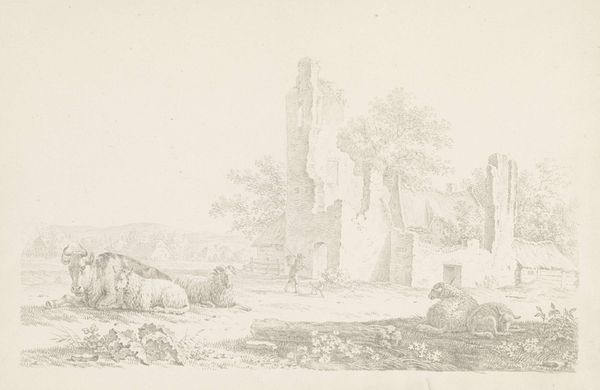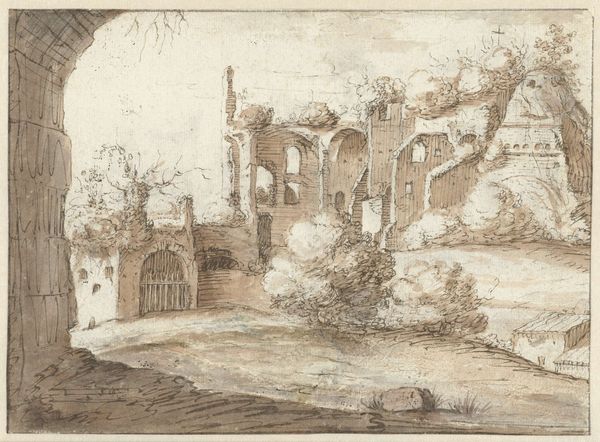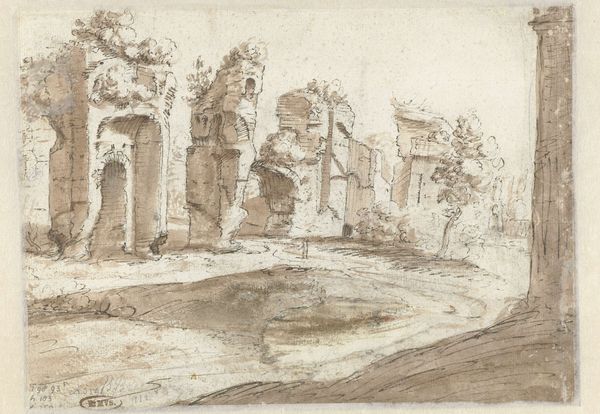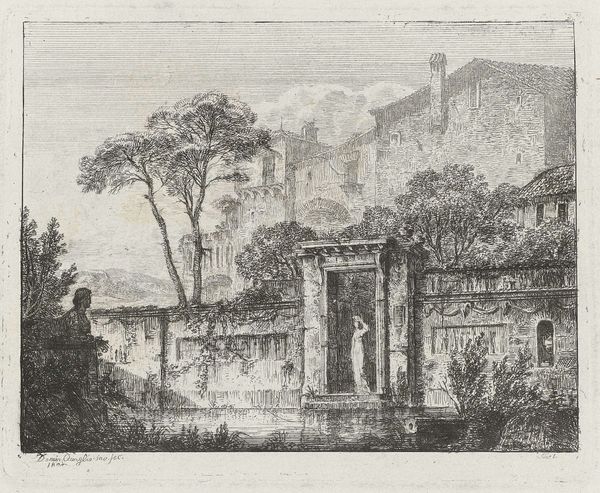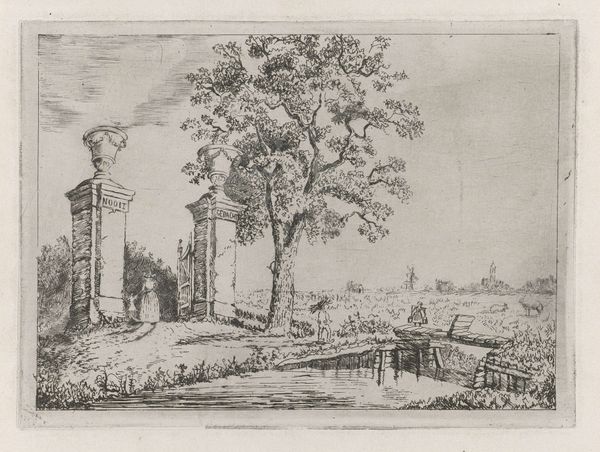
drawing, pencil
#
drawing
#
baroque
#
landscape
#
pencil
#
realism
Dimensions: height 246 mm, width 335 mm
Copyright: Rijks Museum: Open Domain
Curator: Looking at this drawing, the sense of history weighing down is quite palpable. Editor: I agree, the pencil strokes, so delicate, rendering the brute reality of those decaying stone structures is striking, an almost melancholic texture emerges from the page. Curator: That’s Roelant Roghman's “View of the Ruins of Kasteel te Heenvliet”, dating back to the mid-1640s. This work on display at the Rijksmuseum uses pencil to explore not only architectural decline, but the whole symbolic weight that the ruin held within Dutch society at that time. Editor: It makes you wonder about the labor that went into creating the castle originally and compare that with the implications of neglect; What processes of making and unmaking were at play? How were labor forces organized to build the castle, and what sort of craft was necessary to shape such a large, looming form? Then it's reduced to dust by simple neglect! Curator: The socio-political elements of decline in art always fascinate. The Kasteel itself was likely associated with a particular family, power structure, and perhaps specific political events. Seeing it in ruin, memorialized in art, served a didactic function—perhaps even reinforcing republican ideals in the Dutch Golden Age? Editor: Right, the materiality is clearly evident in how the work shows decay—erosion acting upon the stone. How different forms of life slowly reintegrate the edifice, a reminder of nature's supreme control. What survives of material culture and its relationship to the physical land over time. Curator: And consider the image’s role, even today! Museums, by their very nature, curate these moments, preserving not just the artifact or artwork, but a slice of time—sometimes intentionally shaping historical narratives through these inclusions. How a ruined castle becomes emblematic within art collections. Editor: Precisely, seeing how humble materials like pencil and paper manage to encapsulate the scale of architecture and societal evolution… that's the impressive thing. Curator: An astute point about the power in artistic representation using minimal means. It adds depth to appreciating the social value art holds over time, for society. Editor: I’ll certainly view Roghman and ruins quite differently from now on.
Comments
No comments
Be the first to comment and join the conversation on the ultimate creative platform.
